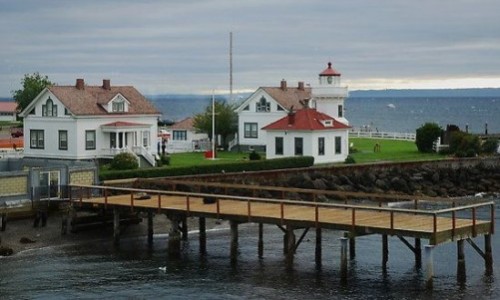- The History of Forest Park and the Zoo
When I tell people about my memories of visiting the bears at the Forest Park Zoo. I get strange looks. When discussing it with those from this area, we name the zoo animals we remember. I have vague memories of other animals but mostly remember bears and many peacocks.
- Speeding and Barking Dogs: Early Days of the Mukilteo Police Dept.
Speeding on 5th St, congestion due to ferry traffic, barking dogs. These are some of the things that have been affecting the residents of Mukilteo since the early 1900’s and are still an issue today.
- An Old Church On 2nd Street
Sense of community and spiritual growth is important when establishing a new city. Between 1907 and 1919, several churches were built to service the spiritual needs of the people.
- History of Lighthouse Park
The area now known as Mukilteo Lighthouse Park has a long history. Native Americans used the land for thousands of years and local tribes held inter-tribal conferences in this area.
- Mukilteo Train Mishaps
Built over the Cascade Mountains via Stevens Pass, the railway sparked an economic boom that opened our markets for fish, lumber and other products to eastern cities, and brought settlers to the Pacific Northwest.
- Mukilteo Lighthouse Roof History
The Mukilteo lighthouse roof was replaced recently, which was an enormous effort by the Public Works crew at the City of Mukilteo. Finding details to document the history of the lighthouse roof was challenging.
- Victor McConnell’s Service Station
Victor McConnell was born on February 2, 1872, in Caledonia, Kent County, Michigan. There is some speculation that, before coming to Mukilteo, Victor McConnell established squatter’s rights to a small unpopulated island just south of Orcas.
- Our Japanese Cultural Heritage
The monument in Centennial Park stands as a reminder of the contributions made by Japanese immigrants and their descendants to the community spirit we share today in Mukilteo.
- The Mukilteo Lighthouse Festival – How it All Began
In early 1966, a handful of members of the newly incorporated Mukilteo Historical Society (MHS) were searching for some way to increase awareness of the history of Mukilteo while also raising money for a future museum.
- Ups and Downs in the Story of Paine Field
Paine Field was named for Topliff Olin Paine, a veteran of World War I. Born in Ohio in 1893, “Top” Paine moved with his family to Everett in 1903, and was graduated from Everett High School in 1911.
- Lumbering Legacy
When the first permanent settlers arrived in Mukilteo, they were surrounded by an abundant supply of timber that could be used for building materials. Plenty of tall Douglas fir could be cut and formed into lumber used for joinery, veneer, flooring and construction. Tall native cedar trees were abundantly available for making roof shingles.
- The History of the Lighthouse Gardens
When Mukilteo Historical Society (MHS) volunteers weed the gardens at the Mukilteo lighthouse, they always receive compliments and thanks. The flower beds are well known for their beauty because the community of gardeners over the years put much thought, planning and hard work into them.
- The History of the Mukilteo Historical Society
A small group of dedicated Mukilteo residents drew up Bylaws for the new Mukilteo Historical Society (MHS) in 1965 as a step towards incorporation in 1966. In 1967, letters were written to Senators Warren G. Magnuson and Henry M. (Scoop) Jackson requesting a site for a museum on the lighthouse property, which was then owned by the USCG.
- What’s up with the Yellow Tape?
We know the MLS is home to two active United States Coast Guard (USCG) Aids to Navigation. The first, a light encased in a Fresnel Lens which was made by opticians in Paris, France in 1852. Visible for 10-12 miles on a clear night, the signature flash is every 5 seconds (2 seconds on and 3 seconds off).
- John H. Davis: Boom to Bust
Logger John H. Davis was built to cut down trees. Six foot two, powerful shoulders, long legs. He matched his strength with the best of them at the slightest provocation or challenge. He bought timber land and sold it and made a profit, for a time. But he died penniless.
- Chart Pitt: A Mukilteo Original (1878-1966)
Chart Pitt was a Mukilteo original. In his heyday, the 1920s to 1940s, some might have called him ornery and a crank. To say he was colorful would be disrespectful to the rainbow. Chart Pitt was an adventurist, a pulp fiction writer, a passionate legislator, full of antics on the Washington State House floor.
- Mukilteo’s Polish Community
About six interconnected families of Polish descent, now blended into Mukilteo’s history, came here from one county in Minnesota. They came for jobs in the lumber mill and stayed to build our community.
- Smugglers, Rumrunners and Bootleggers
Mukilteo and its surroundings were ideal locations for these illegal activities. The area was heavily forested with deep gulches in which to hide stills and stashes of contraband. There were also deep-water coves that could be used to import and export product under the cover of darkness.
- Brennan’s Store
In the early 1900’s, Mukilteo kids looking for penny candy, or adults looking for tobacco products, could always find what they wanted at Brennan’s Store. John Brennan had located his confectionery store at a prime spot on Park Avenue across First Street from the Crown Lumber Company Store and next to the railroad tracks.
- Firefighting and dispatch – from Mrs. Pugh to 9-1-1
Mukilteo history from the early 1900s tells stories of using a bucket brigade to extinguish fires. Imagine using pails of water to put out a house fire. With no fire department, it was up to the residents of the city to help with the water buckets. Before the 1920s, that’s how things were done.
- Mukilteo’s Foghorn
Mukilteo’s foghorn has a storied past. The lobby area where you now enter our historic lighthouse was once a fog signal building that was full of machinery needed to operate a large foghorn.
- Mukilteo’s First Doctor
Before Dr. Chandler’s arrival in Mukilteo, the community’s medical needs were served by a doctor hired by the local lumber mill. The contract doctor from Everett would visit the mill one day a week to administer first aid and check on patients needing treatment.
- Our First Light Keepers
When the Mukilteo Lighthouse lamp was first lit on March 1, 1906, keeper Peter N. Christiansen was on site and ready to ensure its steady beacon remained a guiding light for ships entering Possession Sound. Christiansen’s appointment to Mukilteo came as a reward for his long record of faithful services.
- Beer and Fish Tales
Mukilteo’s beer brewing industry was probably started around 1864 by Mukilteo’s founders, Morris Frost and Jacob Fowler. It was one of their many enterprises that met with varying degrees of success. They built a brewery in a ravine that became known as Brewery Gulch.
- Mukilteo’s Post Office
Early mail routes were served by canoe, rowboat or sailing vessel. When Snohomish County was formed separately from Island County in 1861, a post office was established at Mukilteo, along with the county seat. Mukilteo’s co-founder, Jacob D. Fowler, became the county’s first postmaster.
- Of Dikes, Ballgames and Clambakes
Today’s Lighthouse Park parking area was once the home ballfield for the Mukilteo baseball team. Besides competing against visiting teams here, the Mukilteo team had to battle frequent flooding of their home field. The area had been a tidal lagoon, and the community built dikes to create a dry space for their beloved team to play.
- Early Mukilteo Hotels
In the late 1800s and early 1900s, visitors to Mukilteo had several choices of where they could stay that are no longer present here. The first of these was Fowler’s Hotel which once stood on Front Street near where the new ferry terminal is now being constructed.
- Big Bang Theory
About 6:00 pm on September 17, 1930, Mukilteo’s normal tranquility was shattered by two huge blasts. Besides upsetting the normal tranquility, windows in Mukilteo and Everett were shattered, chimneys were cracked and foundations were damaged. The Powder Plant had exploded!
- Before Ivar’s
Newcomers to Mukilteo may be unaware of the storied history of the property at 710 Front Street, now known as Ivar’s Mukilteo Landing. Although we have not found ownership records prior to 1923, it’s possible the property changed hands multiple times during earlier periods of Mukilteo’s boom and bust.
- Mukilteo Ferry Tales
In a 1967 letter to the Mukilteo Historical Society, Mrs. Frank Hatten describes how she, her husband, and their three children drove their touring car on July 19, 1919, onto the maiden voyage of the first car ferry from Mukilteo to Whidbey Island.
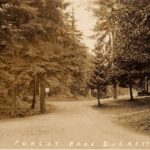 When I tell people about my memories of visiting the bears at the Forest Park Zoo. I get strange looks. When discussing it with those from this area, we name the zoo animals we remember. I have vague memories of other animals but mostly remember bears and many peacocks.
When I tell people about my memories of visiting the bears at the Forest Park Zoo. I get strange looks. When discussing it with those from this area, we name the zoo animals we remember. I have vague memories of other animals but mostly remember bears and many peacocks.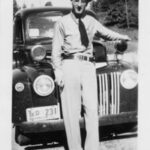 Speeding on 5th St, congestion due to ferry traffic, barking dogs. These are some of the things that have been affecting the residents of Mukilteo since the early 1900’s and are still an issue today.
Speeding on 5th St, congestion due to ferry traffic, barking dogs. These are some of the things that have been affecting the residents of Mukilteo since the early 1900’s and are still an issue today.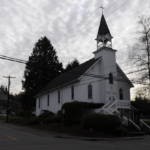 Sense of community and spiritual growth is important when establishing a new city. Between 1907 and 1919, several churches were built to service the spiritual needs of the people.
Sense of community and spiritual growth is important when establishing a new city. Between 1907 and 1919, several churches were built to service the spiritual needs of the people.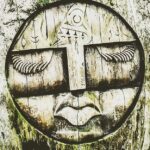 The area now known as Mukilteo Lighthouse Park has a long history. Native Americans used the land for thousands of years and local tribes held inter-tribal conferences in this area.
The area now known as Mukilteo Lighthouse Park has a long history. Native Americans used the land for thousands of years and local tribes held inter-tribal conferences in this area.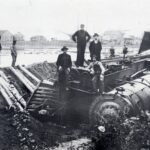 Built over the Cascade Mountains via Stevens Pass, the railway sparked an economic boom that opened our markets for fish, lumber and other products to eastern cities, and brought settlers to the Pacific Northwest.
Built over the Cascade Mountains via Stevens Pass, the railway sparked an economic boom that opened our markets for fish, lumber and other products to eastern cities, and brought settlers to the Pacific Northwest.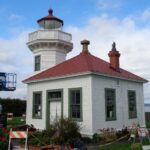 The Mukilteo lighthouse roof was replaced recently, which was an enormous effort by the Public Works crew at the City of Mukilteo. Finding details to document the history of the lighthouse roof was challenging.
The Mukilteo lighthouse roof was replaced recently, which was an enormous effort by the Public Works crew at the City of Mukilteo. Finding details to document the history of the lighthouse roof was challenging.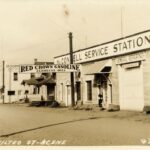 Victor McConnell was born on February 2, 1872, in Caledonia, Kent County, Michigan. There is some speculation that, before coming to Mukilteo, Victor McConnell established squatter’s rights to a small unpopulated island just south of Orcas.
Victor McConnell was born on February 2, 1872, in Caledonia, Kent County, Michigan. There is some speculation that, before coming to Mukilteo, Victor McConnell established squatter’s rights to a small unpopulated island just south of Orcas.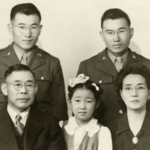 The monument in Centennial Park stands as a reminder of the contributions made by Japanese immigrants and their descendants to the community spirit we share today in Mukilteo.
The monument in Centennial Park stands as a reminder of the contributions made by Japanese immigrants and their descendants to the community spirit we share today in Mukilteo.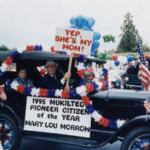 In early 1966, a handful of members of the newly incorporated Mukilteo Historical Society (MHS) were searching for some way to increase awareness of the history of Mukilteo while also raising money for a future museum.
In early 1966, a handful of members of the newly incorporated Mukilteo Historical Society (MHS) were searching for some way to increase awareness of the history of Mukilteo while also raising money for a future museum.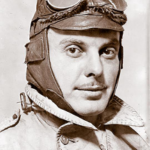 Paine Field was named for Topliff Olin Paine, a veteran of World War I. Born in Ohio in 1893, “Top” Paine moved with his family to Everett in 1903, and was graduated from Everett High School in 1911.
Paine Field was named for Topliff Olin Paine, a veteran of World War I. Born in Ohio in 1893, “Top” Paine moved with his family to Everett in 1903, and was graduated from Everett High School in 1911.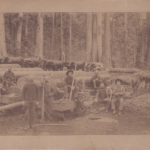 When the first permanent settlers arrived in Mukilteo, they were surrounded by an abundant supply of timber that could be used for building materials. Plenty of tall Douglas fir could be cut and formed into lumber used for joinery, veneer, flooring and construction. Tall native cedar trees were abundantly available for making roof shingles.
When the first permanent settlers arrived in Mukilteo, they were surrounded by an abundant supply of timber that could be used for building materials. Plenty of tall Douglas fir could be cut and formed into lumber used for joinery, veneer, flooring and construction. Tall native cedar trees were abundantly available for making roof shingles.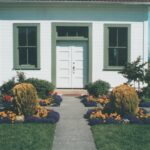 When Mukilteo Historical Society (MHS) volunteers weed the gardens at the Mukilteo lighthouse, they always receive compliments and thanks. The flower beds are well known for their beauty because the community of gardeners over the years put much thought, planning and hard work into them.
When Mukilteo Historical Society (MHS) volunteers weed the gardens at the Mukilteo lighthouse, they always receive compliments and thanks. The flower beds are well known for their beauty because the community of gardeners over the years put much thought, planning and hard work into them.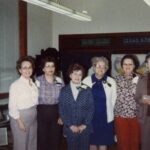 A small group of dedicated Mukilteo residents drew up Bylaws for the new Mukilteo Historical Society (MHS) in 1965 as a step towards incorporation in 1966. In 1967, letters were written to Senators Warren G. Magnuson and Henry M. (Scoop) Jackson requesting a site for a museum on the lighthouse property, which was then owned by the USCG.
A small group of dedicated Mukilteo residents drew up Bylaws for the new Mukilteo Historical Society (MHS) in 1965 as a step towards incorporation in 1966. In 1967, letters were written to Senators Warren G. Magnuson and Henry M. (Scoop) Jackson requesting a site for a museum on the lighthouse property, which was then owned by the USCG.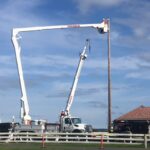 We know the MLS is home to two active United States Coast Guard (USCG) Aids to Navigation. The first, a light encased in a Fresnel Lens which was made by opticians in Paris, France in 1852. Visible for 10-12 miles on a clear night, the signature flash is every 5 seconds (2 seconds on and 3 seconds off).
We know the MLS is home to two active United States Coast Guard (USCG) Aids to Navigation. The first, a light encased in a Fresnel Lens which was made by opticians in Paris, France in 1852. Visible for 10-12 miles on a clear night, the signature flash is every 5 seconds (2 seconds on and 3 seconds off).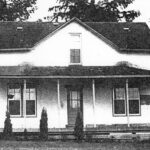 Logger John H. Davis was built to cut down trees. Six foot two, powerful shoulders, long legs. He matched his strength with the best of them at the slightest provocation or challenge. He bought timber land and sold it and made a profit, for a time. But he died penniless.
Logger John H. Davis was built to cut down trees. Six foot two, powerful shoulders, long legs. He matched his strength with the best of them at the slightest provocation or challenge. He bought timber land and sold it and made a profit, for a time. But he died penniless.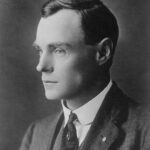 Chart Pitt was a Mukilteo original. In his heyday, the 1920s to 1940s, some might have called him ornery and a crank. To say he was colorful would be disrespectful to the rainbow. Chart Pitt was an adventurist, a pulp fiction writer, a passionate legislator, full of antics on the Washington State House floor.
Chart Pitt was a Mukilteo original. In his heyday, the 1920s to 1940s, some might have called him ornery and a crank. To say he was colorful would be disrespectful to the rainbow. Chart Pitt was an adventurist, a pulp fiction writer, a passionate legislator, full of antics on the Washington State House floor.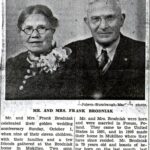 About six interconnected families of Polish descent, now blended into Mukilteo’s history, came here from one county in Minnesota. They came for jobs in the lumber mill and stayed to build our community.
About six interconnected families of Polish descent, now blended into Mukilteo’s history, came here from one county in Minnesota. They came for jobs in the lumber mill and stayed to build our community.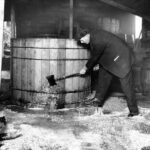 Mukilteo and its surroundings were ideal locations for these illegal activities. The area was heavily forested with deep gulches in which to hide stills and stashes of contraband. There were also deep-water coves that could be used to import and export product under the cover of darkness.
Mukilteo and its surroundings were ideal locations for these illegal activities. The area was heavily forested with deep gulches in which to hide stills and stashes of contraband. There were also deep-water coves that could be used to import and export product under the cover of darkness.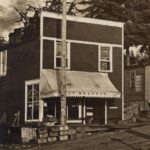 In the early 1900’s, Mukilteo kids looking for penny candy, or adults looking for tobacco products, could always find what they wanted at Brennan’s Store. John Brennan had located his confectionery store at a prime spot on Park Avenue across First Street from the Crown Lumber Company Store and next to the railroad tracks.
In the early 1900’s, Mukilteo kids looking for penny candy, or adults looking for tobacco products, could always find what they wanted at Brennan’s Store. John Brennan had located his confectionery store at a prime spot on Park Avenue across First Street from the Crown Lumber Company Store and next to the railroad tracks.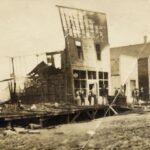 Mukilteo history from the early 1900s tells stories of using a bucket brigade to extinguish fires. Imagine using pails of water to put out a house fire. With no fire department, it was up to the residents of the city to help with the water buckets. Before the 1920s, that’s how things were done.
Mukilteo history from the early 1900s tells stories of using a bucket brigade to extinguish fires. Imagine using pails of water to put out a house fire. With no fire department, it was up to the residents of the city to help with the water buckets. Before the 1920s, that’s how things were done. Mukilteo’s foghorn has a storied past. The lobby area where you now enter our historic lighthouse was once a fog signal building that was full of machinery needed to operate a large foghorn.
Mukilteo’s foghorn has a storied past. The lobby area where you now enter our historic lighthouse was once a fog signal building that was full of machinery needed to operate a large foghorn.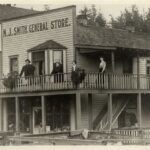 Before Dr. Chandler’s arrival in Mukilteo, the community’s medical needs were served by a doctor hired by the local lumber mill. The contract doctor from Everett would visit the mill one day a week to administer first aid and check on patients needing treatment.
Before Dr. Chandler’s arrival in Mukilteo, the community’s medical needs were served by a doctor hired by the local lumber mill. The contract doctor from Everett would visit the mill one day a week to administer first aid and check on patients needing treatment.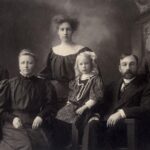 When the Mukilteo Lighthouse lamp was first lit on March 1, 1906, keeper Peter N. Christiansen was on site and ready to ensure its steady beacon remained a guiding light for ships entering Possession Sound. Christiansen’s appointment to Mukilteo came as a reward for his long record of faithful services.
When the Mukilteo Lighthouse lamp was first lit on March 1, 1906, keeper Peter N. Christiansen was on site and ready to ensure its steady beacon remained a guiding light for ships entering Possession Sound. Christiansen’s appointment to Mukilteo came as a reward for his long record of faithful services.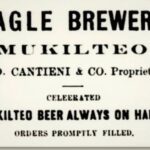 Mukilteo’s beer brewing industry was probably started around 1864 by Mukilteo’s founders, Morris Frost and Jacob Fowler. It was one of their many enterprises that met with varying degrees of success. They built a brewery in a ravine that became known as Brewery Gulch.
Mukilteo’s beer brewing industry was probably started around 1864 by Mukilteo’s founders, Morris Frost and Jacob Fowler. It was one of their many enterprises that met with varying degrees of success. They built a brewery in a ravine that became known as Brewery Gulch.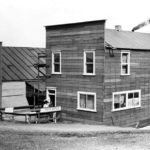 Early mail routes were served by canoe, rowboat or sailing vessel. When Snohomish County was formed separately from Island County in 1861, a post office was established at Mukilteo, along with the county seat. Mukilteo’s co-founder, Jacob D. Fowler, became the county’s first postmaster.
Early mail routes were served by canoe, rowboat or sailing vessel. When Snohomish County was formed separately from Island County in 1861, a post office was established at Mukilteo, along with the county seat. Mukilteo’s co-founder, Jacob D. Fowler, became the county’s first postmaster.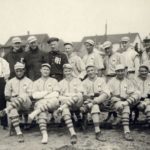 Today’s Lighthouse Park parking area was once the home ballfield for the Mukilteo baseball team. Besides competing against visiting teams here, the Mukilteo team had to battle frequent flooding of their home field. The area had been a tidal lagoon, and the community built dikes to create a dry space for their beloved team to play.
Today’s Lighthouse Park parking area was once the home ballfield for the Mukilteo baseball team. Besides competing against visiting teams here, the Mukilteo team had to battle frequent flooding of their home field. The area had been a tidal lagoon, and the community built dikes to create a dry space for their beloved team to play.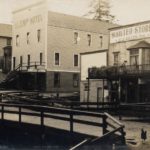 In the late 1800s and early 1900s, visitors to Mukilteo had several choices of where they could stay that are no longer present here. The first of these was Fowler’s Hotel which once stood on Front Street near where the new ferry terminal is now being constructed.
In the late 1800s and early 1900s, visitors to Mukilteo had several choices of where they could stay that are no longer present here. The first of these was Fowler’s Hotel which once stood on Front Street near where the new ferry terminal is now being constructed.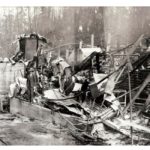 About 6:00 pm on September 17, 1930, Mukilteo’s normal tranquility was shattered by two huge blasts. Besides upsetting the normal tranquility, windows in Mukilteo and Everett were shattered, chimneys were cracked and foundations were damaged. The Powder Plant had exploded!
About 6:00 pm on September 17, 1930, Mukilteo’s normal tranquility was shattered by two huge blasts. Besides upsetting the normal tranquility, windows in Mukilteo and Everett were shattered, chimneys were cracked and foundations were damaged. The Powder Plant had exploded!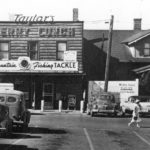 Newcomers to Mukilteo may be unaware of the storied history of the property at 710 Front Street, now known as Ivar’s Mukilteo Landing. Although we have not found ownership records prior to 1923, it’s possible the property changed hands multiple times during earlier periods of Mukilteo’s boom and bust.
Newcomers to Mukilteo may be unaware of the storied history of the property at 710 Front Street, now known as Ivar’s Mukilteo Landing. Although we have not found ownership records prior to 1923, it’s possible the property changed hands multiple times during earlier periods of Mukilteo’s boom and bust.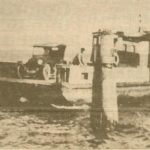 In a 1967 letter to the Mukilteo Historical Society, Mrs. Frank Hatten describes how she, her husband, and their three children drove their touring car on July 19, 1919, onto the maiden voyage of the first car ferry from Mukilteo to Whidbey Island.
In a 1967 letter to the Mukilteo Historical Society, Mrs. Frank Hatten describes how she, her husband, and their three children drove their touring car on July 19, 1919, onto the maiden voyage of the first car ferry from Mukilteo to Whidbey Island.